The Secrets of Freemasonry Are Not Taught In The Lodge
The facts upon which the ritual is based are old and have become obscure, or forgotten, or lost in the ritualistic accretions so that it is necessary for the Mason if he would understand Freemasonry, to recover that meaning.
The large majority of the craft do not comprehend these facts because of the dense veils thrown around them. They see and learn only the outward forms, and the less the ignorant Mason knows, the more will he admire and believe.
What then is this thing which constitutes the mystic tie that holds its adherents in such a compact brotherhood? What is it that defeats all efforts to weaken it or to destroy it? It is the peculiar religion, which constitutes the essence, the life, the heart, the soul of this institution.
The organization, despotic in its government, its oaths, horrible in their penalties, its ceremonies, impressively solemn, its secrets, mysteries in their nature, are all designed to conceal and to protect from profane eyes, this Religion. Religion is its mystic tie.
Religion has ever been and is even now the most powerful factor in human activities. In some form it has been the motor back of the commanders of the armies, and of statesmen that founded the great world empires of the past, that animated and upheld the most despotic governments, that fomented the bloodiest revolutions, that precipitated nations into sanguinary conflicts and that united alien peoples into almost indissoluble unions; that established the most arbitrary and despotic priest craft, enforced intellectual thralldom, and the tyranny of rulers. It has instigated, sustained and justified the most dastardly, atrocious, barbarous, and licentious acts in human annals, as well as the most liberal, just and pure.
It has inspired the erection of the most stupendous, most elaborate, and the most costly structures as monuments to its power, and as shrines for its gods. It has produced the finest specimens of art, voiced the sweetest and holiest of song and inspired the loftiest flights of the intellect in all the realms of human knowledge. It has transformed human perverts into saints, and changed moral creatures into demons of lust, fury, and crime.
It has enabled timid women and children to defy the threats of tyrants, and smile upon the terrors of the dungeon, flames, and death. It has cemented brotherhoods and cults into unions which defeat the sagacity of statesmen, the erudition of jurists, the skill of marshals, the power of kings and the anathemas of popes, to destroy. Religion is without doubt the most powerful motor in man, and religion is the motor in Freemasonry.
Freemasonry in its chief and essential features, IS a Religion, and as such it has marks and elements which are peculiar to itself but which also differentiate it from Christianity. These vital and essential elements in this religion are not spiritual facts and spiritual mysteries, but Carnal and Psychical, the facts of life and the mysteries involved in the generation and reproduction of life, and from their nature appeal most powerfully to man.
They relate to the living principle in man and to his dominant passion namely the desire to procreate. They therefore excite the passions, awaken the emotions, impress profoundly his mind, and engage most deeply his thought.
That there should exist a certain amount of misunderstanding both within and without the Order as to the real aims and nature of Freemasonry is inevitable, even independently of any fraudulent desire of secrecy or misrepresentation on the part of the Order itself.
Thus, to take one notable example, what ignorance do we not sometimes find even among Christians, not to speak evil of Masonry, of the real spirit and teachings of the Order. Even of those that are imbued with the True Christian spirit how small a percentage are capable of analyzing it or explaining it to others or pointing out its essential opposition to the spirit of Christianity, because almost everyone has a family member who is either a Mason or an Eastern Star; and not wishing to believe that their loved ones could possibly belong to such a Satanic organization.
If this is true of the Christian Church, notwithstanding its open declaration of its doctrines, practices and aims, and its continuous efforts to make them understood by all, is it such a matter of wonder that there are multitudes of Freemasons, at least in the outer circles of the Order (and high officials are often only in the outer circles) who, although staunch supporters of Freemasonry, know in reality little or nothing of the real aims and character of the Order to which they belong and which they support?
It is true that the oaths of absolute secrecy which all take, and which are manifestly unlawful, seem to preclude the possibility of entire good faith (at least in the case of members that are thoughtful or intelligent), but they are consistent with ignorance of the real nature of Freemasonry.
But in addition to all this, Freemasonry is far from being an open and honest association like the Christian Church. The latter, even from the beginning, “lays all its cards on the table.” It will not receive a neophyte till he is made fully aware of the teachings he has to accept and the manifold obligations he is undertaking. Freemasonry, on the other hand, is a secret society.
We believe that we have shown in this book the real character and aims of the Order is to deceive, at least in part, not only the outside public, but even the vast majority of their own members. Hence these latter are utilized as instruments for purposes which they do not understand, while they are solemnly sworn to secrecy even as regard to the very little which they may actually know.
Masonic Benevolence
First as to Masonic benevolence. We do not deny that many individual Freemasons, at least of the outer circles of the Order, are men of natural goodness and kindliness.
It is also true that Masons assist each other a good deal, and that in America, as in all countries in which Masons have secured influence and power, non-Masons, and especially Christians, have to suffer from the systematic and oftentimes unscrupulous partiality which Freemasons show, even in the exercise of public functions, toward members of the Craft. It is true, moreover, that Masons, even in their corporate capacity, do sometimes take part in works of benevolence or philanthropy.
But Masonic benevolence as such is of a type quite different from that upheld and enforced by Christian teaching. it has no reference to the love of Our Divine Lord, whose divinity Freemasonry does not recognize, nor to the spiritual welfare of either giver or recipient; and is practically confined to the members and dependents of the Craft. It is in fact purely or mainly utilitarian, and is one of the means utilized to win credit for Freemasonry with its own lower grades and with outsiders.
Freemasons’ Belief in God
Secondly, as regard to the belief in God, which the Anglo-American have to profess.
It is well known that the symbolic and somewhat cryptic term, “The Grand Architect of the Universe,” by which they designate their God, does not necessarily mean a personal God in the Christian sense, and that the profession of faith in the Grand Architect, which the English-speaking Masons still retain as one of the “landmarks” of their sect, is so vague that practically any kind of Atheism, Materialism, Pantheism, or Polytheism may be covered by it.
It can be shown conclusively from authentic Masonic documents that the Masons’ “Grand Architect” is very far indeed from being identical with the God of the Christians, and that the phrase is in reality of a formula, which may be used to indicate the object of worship chosen by the particular individual that uses it, whatever that object may be; besides in real esoteric Masonry, which is the center on which the whole order pivots, the object of worship, is a material and not a spiritual being, or if a spiritual being, that being seems to be none other than Satan, the spirit of evil, and is proven by Albert Pike in his book “Morals and Dogma.”
The formula of the Grand Architect . . . is the most large-minded and righteous affirmation of the immense principle of existence, and may represent as well the (revolutionary) God of Mazzini as the Satan of Carducci (in his celebrated Hymn to Satan); God as the fountain of love, not of hatred; Satan as the Genius of the good, not of the bad.
Freemasonry and Christianity
It is untrue that Masonry inculcates or Implies any kind of belief in Christianity! Even the English Masonic manuals distinctly repudiate any such claim. We read:
“It does not even require of the members of the Masonic order a profession of Christianity; but freely admits Jews, Mohammedans, and others who reject Christian doctrine.”
Again, Albert Pike, admittedly among the best and most authentic exponents of Masonic teaching, wrote:
“Masonry propagates no creed except its own simple and sublime one taught by nature and reason. There never has been a false religion in the world. The permanent, one, universal revelation is written in visible nature . . . There is but one religion, one dogma, one legitimate belief.”
In other words the religion of Masonry is Naturalism, the very antithesis of Christianity. Again, not only it sit untrue that Freemasonry requires or imposes a belief in Christianity, but the very contrary is the case. For the one and only thing in which Freemasonry is everywhere and always consistent with itself is antagonism to Christianity.
Its Anti-Social Principles
The natural organization of the family is also undermined. Governments often refuse to see in it the indivisible and fundamental unit in the social organism. It is deprived of its religious consecration which even the pagan nations of previous ages usually retained; and the principle of allowing the individual to dispose freely of the hereditary family homestead or estate had undermined its stability by removing its economic foundation.
The right of private property, which from time immemorial has been at the basis of society, is now attacked; and new combinations and arrangements are conceived for employing and feeding the masses of humanity. Again, the natural organization of labor (founded upon reciprocal duties and rights as between master and man) which is traditional everywhere and in all periods of recorded history has been upset.
The man is proclaimed the equal
in all respects with the master
While the latter is exempted in the exercise of his property rights from all natural duties and responsibilities towards the man. The result is the unnatural and destructive class war now raging or being stirred up in most countries of the civilized world.
Masonic Moral and Social System
In the Christian concept of society, morals as well as social rights and duties are founded upon man’s relation to God and the example and teaching of Our Divine Lord. The whole Christian organization of society has been erected upon this basis. In the Masonic idea human virtue and morality are independent of the Deity, and the Law of Christ whose Divinity is ignored or denied. Hence, Freemasonry is essentially opposed to Christianity and destructive of the Christian organization of society. it is Naturalism, which may be described as a scientifically elaborated system of paganism.
The following extracts from a very able and remarkable address delivered by the Belgian Liberal and Masonic leader, Goblet d’Aviella, at a select Masonic gathering in Brussels (1877), will serve to illustrate more fully the essential opposition of Freemasonry to Christianity:
“Experience proves that this program (of negation and destruction) is not sufficient if we are to battle with devotedness and enthusiasm . . . against a Church which is doubly powerful owing alike to its rôle in the past and its lofty aspiration for the future, which excels in the skill, the numbers and the discipline of its adherents, which addresses itself to every age and sex and rank in life, which binds its members to itself by so many and such powerful bonds in every sphere of human activity.
To meet such an adversary with weapons equal to his own, the Liberals have to complete their program by a consistent system of positive teaching, envisaging men in every relation and aspect of human nature, and enabling them to solve the great problems of modern society. Such a system will supplement the political associations by giving them a rallying-point on a moral, philosophical, religious and social plane . . . The Masonic lodges are the only places in which one can study and formulate with fullness and scientific objectivity the whole series of problems which affect men’s rights, duties, mutual relations, and final destiny . . .
Freemasonry being at the same time traditional and progressive, local and cosmopolitan . . . transcends time and space. It rests on traditions whose origin is lost in the twilight of history: it possesses a symbolism whose mystic beauty does not exclude an actual beauty of its own. It has in fine an imposing ceremonial to lend sanction to all the solemn facts and realities of life.
It is by means of this fullness of organization that Freemasonry is in a position to rival its great enemy, the Christian religion. It is thus that it becomes the natural, I will even add the necessary, complement of Liberalism . . .
Impress therefore on your neophytes that Freemasonry is not, as some superficial observers suppose, a child’s play, a convivial society . . . much less a purely benevolent institution, or even a replica of our political associations . . . Tell them that Freemasonry is above and beyond all a school of perfection and scientific formation and propaganda, a sort of laboratory where the great ideas of modern social life are combined and fashioned into a consistent whole with a view to their propagation in the world outside in a tangible and practical shape. Tell them in one word that we are the philosophers of Liberalism. Tell them all this, but with the reserve which Masonic secrecy requires.”
From its own description of itself, Masonry is to be regarded as a Religion, that is if one can conceive religion without a god. It has to do with “divine truth,” and has its special system of morals and worship and its own peculiar liturgy, ritual and symbolism. It aims, like the Christian Church, at training the mind and molding the character of its members in accordance with its own peculiar ideals, and strives to propagate its tenets and morals among all mankind. The works of Ragon, Pike, Mackey, and other Masonic authors are largely occupied in unfolding the Masonic doctrines concerning the ruling powers of the universe, and describing the rites and observances by which man is to render due homage to them.
A.G. Mackey writes, and all Masonic authors corroborate his words:
“Masonry is undoubtedly a religious institution . . . its religion being of the universal kind, in which all men agree.” Hence, Masonry as a religion is the very antithesis of dogmatic Christianity, which is Catholicism. It is at best some kind of common denominator which belongs equally to all religions (except the true one) and none, a religion in which Protestants, pagans, idolaters, Mohammedans, Hindus, Parsees, Buddhists, Theosophists, Mormons, etc., may all meet on common religious ground. Christians, however, are excluded, for the true religion cannot vary or contradict itself. Hence, both Christian and Masonic authorities agree that the two systems are mutually exclusive.
In order to appreciate fully the implications contained in the universality of the Masonic creed, which is a fundamental principle in Freemasonry, we must remember that the Freemasons put forward their system as supplying a perfect and all-sufficing religion, “making a man complete in morality and intelligence, with a state or religion added to ensure him the protection of the deity, and to guard him from going astray, so that ‘nothing more can be suggested which the soul of man requires.'”
Hence, Masonry is meant to be a complete religious system, whose fundamental principle is a recognition and worship of “The Grand Architect of the Universe.” Those who are only in the outer circles of the fraternity may not at first understand who or what that Grand Architect is. Little by little, however, the system and all that underlies it become more apparent; and, as the initiated studies the symbolism and ritual more deeply, he comes to realize the full worth of that moral, intellectual, and religious formation which Masonry imparts, and which “contains all that the soul of man requires.”
Owing to the policy of deception which Masonic leaders avowedly adopt, it is difficult to analyse with accuracy and certitude the essence of the underlying religion of Masonry, and we shall not attempt the analysis here.
Suffice it to say that the real inner Masonic religion upon which the whole system hinges is founded upon some type of Cabalistic or Jewish Pantheism, and implies, or is, a deification and worship of unregenerate humanity. Its degrading character is indicated sufficiently for our present purpose by the nature of the symbolism and cult with which esoteric Masonry is associated. According to the vast majority of the great Masonic authors, the Masonic secret cult is derived from the ancient “mysteries” of India, Egypt, Persia, Greece, and Rome.
These mysteries are nothing more or less than those obscene and undescribable forms of worship, in which the generative processes of nature, symbolized by the human organs of reproduction, were the object of licentious homage. That this worship is the real pivot of the Masonic religion, and the center of Masonic ritual and symbolism, incredible as it may seem, does not admit of reasonable doubt. For although it is denied by some Anglo-American writers, such as the English Oliver, their denials and their attitude show inconsistency and, in face of the overwhelming evidence to the contrary, cannot be seriously maintained.
Hence, whatever one may hold as to the identity of the Masonic deity, called the Great Architect, namely, whether or not it be Satan himself, this much at least is certain, that the religion of Masonry is closely connected with the most hideous and degraded of the pre-Christian cults, one which is commonly believed to betray the direct and immediate influence of the Evil One.
Most of the Masonic symbolism, in its original and proper meaning, refers primarily to the Solar and Phallic worship, associated with the mysteries above referred to.
This fact is testified by the great authorities of Anglo-American Freemasonry: Pike, Mackey, Thomas Webb Smith, William Preston, and Hutcheson. Ragon, the “Sacred Author,” adds his testimony to that of the Anglo-American writers. Ragon expressly says that the Masonic God is the God of the Pyramids, thus identifying the Masonic cult with the religion of the ancient Egyptians; and this epitome of the Masonic creed is fully justified by the interpretation of the Masonic rites and symbols furnished by Ragon himself, and the recognized Anglo-American Masonic authorities.
In order to convey a succinct but intelligible account of this difficult portion of our subject which, to be frank, we fear to handle, we believe we cannot do better than transcribe a passage from the “Lyceum,” pp. 224-225 written several years ago, in which the distinguished writer already referred to, with a pen more skilled than ours, strives to convey, “within the limits which respect for his readers imposes . . . what, according to the authorized interpretation . . . of the Craft, is the symbolical purport of the rites admitting to one or other of the Masonic degrees.
The three first degrees of the Order — those of the Apprentice, of Fellow Craft or Companion Mason, and of Master Mason, common to all the rites of Masonry are known as symbolic degrees. The candidate is admitted to them by a series of fantastic ceremonies, which we need not describe in detail . . . the full significance of which . . . is not yet revealed to him. He learns nothing but the symbols and the sacred words themselves. He is besides copiously edified by allusions to God and the Bible, the deeper meaning of which is withheld till he reaches the higher degrees of the Order. Indeed, it is not till he arrives at the thirty-third degree (in the Ancient Scottish rite) that of Sovereign Grand Inspector-General, that the genuine ‘mysteries’ which underlie these outward forms are laid bare to him. When the final stage of the illumination is reached he learns such truths as the following: ‘The rite of initiation for Apprentice Masons represents in dramatic fashion the origin or birth of the Nature of God, of the Great All. It imports the non-existence of a supernatural personal God . . . It signifies that no being is wholly material, that the two principles, matter and form, male and female, are always two in one and one in two, eternally generating. It signifies that God is a bi-sexual being, a hermaphrodite, and that creation is the beginning of the process of generation.
The initiation rite of the Second Degree represents the normal condition of the Nature of God, always in labor, always generating. It imports that God is a hermaphrodite, that His name has always signified the God of Generation . . . Jehovah . . . signifies He-She, that is, the two sexes in one. . . . The dual principle, male and female, is represented by the square and the compass: by the compass, symbol of Osiris, the male; and by the square, symbol of the earth, Isis, the female.
The initiating rite of the Master’s Degree introduces us to the story of Hiram, one of the architects of Solomon’s Temple, as related in the Targum. But Hiram must be regarded here as an allegorical being, symbolizing the ‘Grand Architect of the Universe.’ In this rite the process of generation is represented as complete; God and the name of God, which the candidate is supposed to have been seeking, are discovered. The name of the deity thus revealed is Moabon — the name given to the child of Lot and his daughter, the earth. This deity is also called Mac-Benac, ‘Offspring of Putrefaction,’ inasmuch as death and decomposition must precede the beginning of life; and the seed must die before the plant lives.
This (says Ragon) is the important phenomenon, the ineffable mystery, the key of nature which the ancient sages succeeded in discovering, and which they adopted as the basis of their doctrines, and the subject of their legends . . . the Legend of the Ages. Understood according to this interpretation, the revolting atrocities of Saturn, and of the incestuous Phaedra, etc., are nothing else than interesting enigmas, which involve facts well worthy of being handed down to us.’
It is not necessary to pursue the explanation further, or to introduce you into the still deeper “mysteries” of Masonry. We spare you any description of the ritual of the higher degrees, such as the blasphemous profanations of the history of the Last Supper and death of Our Divine Lord Jesus Christ, which occur in the ritual of initiation into the eighteenth or Rose-Croix degree. What has been said so far, and will be said later, will suffice to illustrate the character of the “divine truth,” the discovery and propagation of which are represented as the essential scope of Freemasonry; and to indicate that nature of the peculiar system of morality which Masonic allegory veils, and its symbols illustrate.
It is easily understood how inveterate the antagonism between Freemasonry and Christianity; they are opposed to each other as uncompromisingly as light is to darkness, goodness to evil, or as Satan is to God.
The Masonic Secret
From the authentic definitions of Freemasonry which we have already quoted, as well as from other authoritative Masonic writings, we gather that the descriptions given by Freemasons themselves of the character and aims of the Masonic association are not to be interpreted in the obvious sense of the words used, but have allegorical and symbolic significations. “Almost every one of the ancient Masonic symbols,” writes Albert Pike, “has four distinct meanings, one, as it were, within the other, the moral, the political, the philosophical, and the spiritual meaning.”
Thus, according to the same authoritative witness, Hiram, Christ, Molay are regarded as symbols representing “Humanity,” seeing that they were each and all the apostles of “Liberty, Equality, and Fraternity;” the cross is by no means a specifically Christian symbol but, as it is hinted, is closely connected with a certain peculiar cult, does not at all refer to the sacred Passion of the Lord Jesus Christ, but is Masonically read “Igne Natura Renovatur Integra” (all nature is renewed by {Masonic} fire); for the regeneration of nature by the influence of the sun symbolizes the spiritual regeneration of mankind by the sacred fire of Masonry as a purely naturalistic institution. Christ dying on the cross is for Masonry “the greatest among the apostles of Humanity, braving Roman despotism and the fanaticism and bigotry of the priesthood.”
From Masonic official documents we also know that the vast majority, even of the Masonic brotherhood, do not understand the full trend or purpose of Masonic teaching and activities. They are instructed only by slow degrees, and are admitted more and more into the secrets of the Craft in proportion as they become morally attuned to the Masonic ideals, and thus capable of understanding the higher degrees of the Order.
“Part of the symbols,” again writes Pike, “are displayed . . . to the initiated, but he is intentionally led astray by false interpretations.” And again, “Masonry conceals its secrets from all except the Adepts, the Sages, and the Elect; and uses false explanations of its symbols to mislead those deserving to be misled.”
The character of the inner Masonic religion, as above described, supplies one obvious explanation of the veil of mystery under which Masonry thus hides its real self; of the horrible oaths by which it binds its votaries, especially those of the higher degrees, not to reveal its secrets; and of the essential element of occultism which is so prominent a feature in every aspect of Freemasonry. These efforts towards profound secrecy are in no wise relaxed, even where the power of Freemasonry is predominant, and the Masons have nothing to fear from the interference of the civil authorities.
Why (writes Père Deschamps), now especially, when Masonry is everywhere protected and everywhere triumphant, why does it still continue to have its secret lodges, its initiations, its dreadful oaths? Manifestly . . . it is obliged to do so, for it has many things to hide, many secrets which public opinion would revolt from, and upon which it cannot afford to let in the light of day. In reality, however, as another writer truly says, Freemasonry has only one central secret, which is the pivot of the whole Masonic system, and which cannot be openly proclaimed to its dupes whether within the sect or without.
“Freemasonry is Satan’s army on earth; it is in a certain sense Satan himself, the Adversary of God and of the children of God (True Israelites — not “Jews”). It is revolt personified, the irreverent impious revolt that blasphemes against God . . . That is its secret, which is the foundation of all its symbolism in the high grades as well as in the low.”
Freemasonry and Satanism
In all that we have so far said, the religion and morals of Freemasonry are only partially revealed, in as far, namely, as direct and conclusive proof may be drawn from their own official publications to which Cowans may access.
Limits of space and other reasons preclude us from discussing the deeper and more intimate nature of the Masonic secret: how far, namely, the Masonic cult is to be identified with the “formal” worship of Satan, the arch-enemy of mankind, and how far Satan physically co-operates in Masonic activity.
That this is the case is hinted at in some of the Papal condemnations. If one takes into consideration (writes the Editor of the Acta Sanctae Sedis) the immense development which these secret societies have attained; the length of time they are persevering in their vigor; their furious aggressiveness; the tenacity with which their members cling to the association and to the false principles it professes.
The persevering mutual co-operation of so many different types of men in the promotion of evil; one can hardly deny that the “Supreme Architect” of these associations (seeing that the cause must be proportioned to the effect) can be none other than he who in the sacred writings is styled the “Prince of the World.” And that Satan himself, even by his physical co-operation, directs and inspires at least the leaders of these bodies, physically co-operating with them.
Concerning the question here raised, this may be said with certainty: Freemasons formally and expressly associate their sect and religion with the Phallic worship and the ancient pagan mysteries, and with the Bacchic rites practiced in ancient Egypt and Greece, and thence introduced into Rome, where the cult was made criminal and banned, even by the pagan Roman government.
A similar cult was practiced at least to some extent, even in the ages of Christianity, by not a few of the more degraded of the heretical sects that have sprung up from time to time. Among these were the early Gnostics, the Manichaeans, the Albigenses, and several other sectaries of the fourteenth and later centuries.
All these sectaries, although differing widely in many details of their doctrine and practices, show a certain family likeness; and all are claimed by the modern Freemasons as their exemplars, their predecessors, and their forebears.
Like the modern Freemasons, they had their secret signs, their initiations, their cryptic symbols, their uncanny ceremonials, and their horrible oaths. All, like the Freemasons, sought darkness, secrecy, falsehood, and evasion, and shunned the light of day.
It is certain that all these sectaries, notwithstanding their many-sided divergences, had in common some doctrinal elements and mystical cult which Freemasonry inherits, and which, whatever it be in itself, is not only opposed to Christianity, but is bitterly aggressively antagonistic . . . and shows an avowed and undying hostility to the True God!
An interesting side-light on this part of our subject is had from the opinions and discussions of Catholic theologians who treat the question of magic and diabolical interference in human affairs. It is the ordinary view that one of the demon’s apparent objects in offering assistance to men is to gain worship for himself, and to wreak his spite on God by mimicry of the sacred rites of the Church, and by outrages on the Holy Eucharist.
It is also an interesting phenomenon that a certain well-defined consistency seems to run through almost all the teaching which professes to come from spirits in spiritualistic seances and such like. The demon strives to throw ridicule upon the dogma of Hell, and returns constantly to the suggestion that one religion is as good as another, profited that it is not the Christian religion.
How closely all this is connected with the spirit and teaching of Freemasonry it is not necessary to elaborate. The spirit of evil, although crafty and eminently protean, cannot alter his essential character, so that his different activities will always betray a certain fundamental similarity.
It is beyond doubt (writes Belliot) that there exists in the world today an organized religion, which is a veritable “religion of evil”; and that that religion is Freemasonry. Its god is identical with the deity worshiped by the Ophites (the extreme section of the Manichaeans) of old, in the shape of a serpent, and which, (as some authorities assert, the heretical section of) the Templars adored under the name of Baphomet.
In brief, it is Satan himself, with or without disguise. In fact, it has actually occurred on several occasions that Freemasons have openly celebrated the praises of the satanic god: In 1882, at Turin, where Carducci’s “Hymn to Satan” was chanted in the crowded theater; at Palermo, where Ripsardi, another panegyrist of Satan, was received in triumph in a public school; at Geneva, where the standard of Satan was set up and honored during a public celebration (September 20, 1884); at Rome, where Professor Maranelli delivered in the course of the same year a public eulogium of Satan; at Brussels, where the Society of Free Thought gave a public conference on the Rehabilitation of Satan.
Again, it is undeniable that demon-worship is suggested by several of the Masonic rites and ceremonies; and that an atmosphere pervades them all, which, to put the matter mildly, is uncanny and repulsive to the Christian mind.
If this interpretation of Freemasonry be adopted, a full light is thrown on all its history, activities, and achievements; and it would seem that no other explanation can furnish an adequate key to its seeming contradictions, its lying spirit, its many-sided and apparently mutually-destructive tendencies.
Freemasonry and Anti-Christ
It is outside our scope to discuss the difficult and complicated question touched upon by Pius X, and which, since his day, has received further light, as to whether, or how far Freemasonry is to be identified with Anti-Christ. “So extreme,” writes that holy Pontiff in his first Encyclical, “is the general perversion that there is room to fear that we are experiencing the foretaste and beginnings of the evils which are to come at the end of time, and that the Son of Perdition, of whom the Apostle speaks, has already arrived upon the earth.” Many years have passed since these words were addressed to the Catholic Church; and few will deny that today the reason for fearing what the (so-called) Holy Father suggests are much graver than ever before.
Without committing ourselves to any opinion on so uncertain a subject, we will close this portion of our sketch by a striking passage, in which Rev. T.A. Burbage, writing in the “Catholic Bulletin” some twelve years ago, summarizes an interesting discussion of the subject: “It (Freemasonry) bears, unmistakably, the brand of Anti-Christ. To an extraordinary extent it fulfills the substance of that tradition which has been handed down from generation to generation. ‘It is opposed to every existing worship true and false.’ It is opposed to Christianity, Muhammadanism, Judaism, to the religions of Buddha and Confucius, and to every other perversion of religious thought that has hitherto exited. It insists on building temples and raising altars of its own. It has its own special ritual and ceremonies, its priesthood, and its secret worship. It has set up its new-fangled paganism as a substitute for the religion (Christianity) of the True God. It wallows in blasphemy and in crimes of bloodshed and injustice.”
It has despoiled and profaned churches. It has robbed and cast out the ministers of Almighty God. It has torn the children from the fold of Christ. It has delivered individuals to torture and death, and plunged nations into sanguinary wars. It has done these things, and many things more with a hypocritical pretense to virtue and love of humanity that could scarcely be surpassed by the father of lies, from which it springs.
No such embodiment of evil has ever existed in this world, or is every likely to exist. Heresies have existed that have imperilled human souls and damaged the cause of God. Men have bound themselves together for the promotion of unjust and evil ends. But we search in vain for anything that strikes so deliberately and persistently at everything that the uncontaminated human soul holds sacred. Unless Anti-Christ be Satan incarnate as some indeed have held, then Freemasonry is Anti-Christ.
The institution fascinates the imagination and charms the disciple with these mysteries of life with which it deals and professes to unfold. It is hard to conceive of anything more exquisitely fitted to appeal to the natural man and incite him to fidelity than is this institution, because it deals not with the spiritual side of his nature, but with the carnal and psychical, and makes the gratification of those carnal desires a sacred privilege and a solemn duty.
It is a religion which makes the mystery of procreation the objective fact upon which it rests; the mysterious life generating principle in man the object of adoration and worship; the generative acts the pattern for its rites and ceremonies; the generative organs the basis of its symbolism, and the passions the inspiring spirit. The peculiar charm and fascination which Freemasonry has for its disciples is to be accounted for on this intimate connection between the religious ideas which it holds and inculcates, and the functions of sex in the reproductive processes.
It conceives of the divine nature as residing in man, and that it is especially active and expressive in the sexual passion; and that the gratification of this passion is pleasing to the deity and is the duty of the Mason. It aims to make passion, therefore, sacred by making its gratification a moral and religious duty. On its theological side, Freemasonry is a sort of Pantheism, the deity being the generative principle, the reproductive power which pervades all animated nature. And as this power inheres in man, it is viewed as “incarnate in humanity in toto,” thus establishing man’s union and unity with the divine nature.
In the deification and worship of this generative principle, Freemasonry makes the dominant carnal passion the subjective fact upon which this Religion is based. The two constituent elements of this Masonic religion are the idea of the divine nature in man, and man’s cooperation with the divine nature in the reproduction of life.
This generation of human beings through sex agencies, is the “great work” of Freemasons, which it characterizes as “building a temple for the indwelling of the Great Architect of the Universe.” Upon this “temple every Freemason is enjoined to labor.” With desire as its deity, the procreative instinct for its animating spirit, humanity for the temple of its god, and the origin and destiny of the human soul for its mystery, Freemasonry appeals most powerfully to the natural man.
“But the natural man receiveth not the things of the Spirit of God: for they are foolishness unto him: neither can he know them, because they are spiritually discerned.”
It is contended by some that Freemasonry is unworthy of serious notice and investigation, and that it will eventually decay, and lose its charm and influence. In this opinion we do not concur. It is a sex cult, and like its prototypes and predecessors, will always have a large and influential following. Sex cults always have had a strange fascination for mankind.
The ancient ethnic religions were sex cults, and more less secret. So long as public sentiment frowns upon indecencies, excesses, and sexual uncleanness, such cults can not exist except under esoteric forms. Their existence depends upon secrecy.
If then these secrets of Freemasonry become known to the general public surely all decent and self respecting men who have been lured into the lodge under its veiled pleas of morality will leave it because of shame. They will confess their deeds, and burn their books. But so long as carnal minded men deify passion and worship it in secret, so long will there be men who will defend this religion and who will worship at its shrines.
Over against this ancient religion modernized and veiled under a new name, and taught in the language and imagery of a builder’s craft; Masons are thus taught that we as followers of Jesus Christ, must oppose the Mysteries of the Kingdom of God, the facts, the claims, the doctrines of His Gospel.
We hold that Christianity is the pillar of society, the only safeguard of the nations, the parent of social order, the ground of that Truth, which alone is able to curb the passions, to teach men to love Truth, to practice charity, and to guarantee to each individual his inalienable rights.
Christianity must not ignore its rivals and enemies, who hold down the Truth in unrighteousness. Christianity must enter their dark chambers and bring to light the “hidden things of darkness.” It must not only point out the “cunningly devised fables whereby men lie in wait to deceive,” but also set forth its testimonies over against all other claimants for man’s service, devotion, and worship.
In the facts, acts and teachings of Jesus Christ, and the Truth involved in them, the religious sentiment in man finds its steadfast anchor, its fullest, purest, highest and most symmetrical development and expression.
Freemasonry with its boastful claims to antiquity, universality and sublime morality, cannot offer any valid reason why it should not be investigated, compared with Christianity, and tested in the light of history and of the Word of God. We must oppose the Mystery of the Incarnation of the Son of God over against the mystery of procreation; of spiritual entities and facts over against the psychical mysteries of these cults; spiritual regeneration over against carnal generation.
The most dangerous antagonists of Christianity in its earliest days were the worship of Isis, under various modifications as Demeter, Cybele, Diana, or as the power of fertility; and Mithraism, the worship of the generative power under the aspect of light.
“And no marvel; for Satan himself is transformed into an angel of light.”

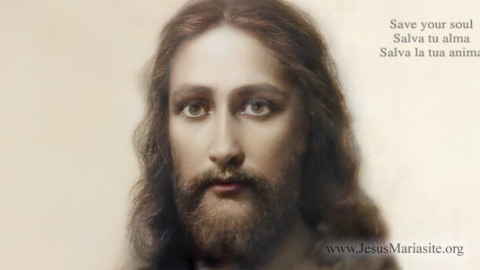
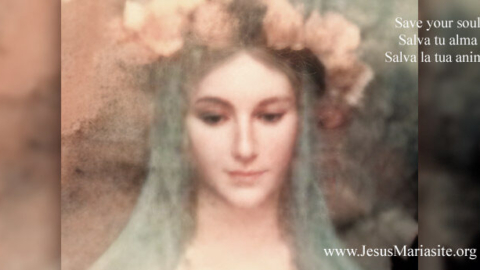
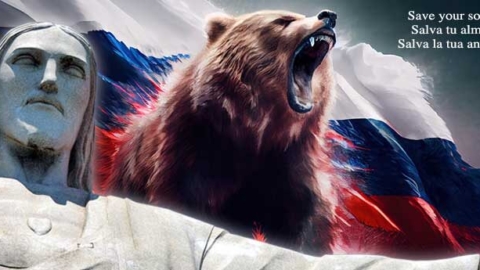





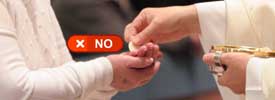






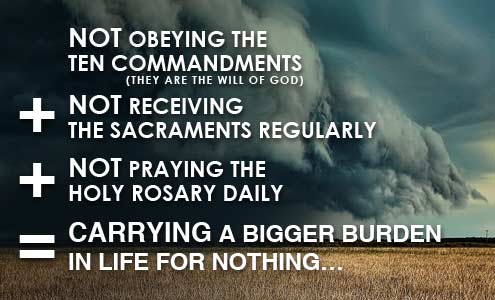
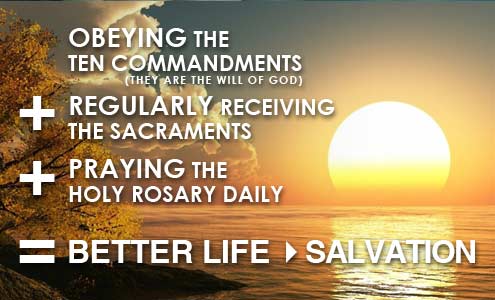

 Pray for the Church, its Hierarchies, the validly ordained and consecrated during this time of confusion and apostasy. Do not fall into the trap of division, even with apparent good reasons. Turn your eyes to the lives of saints, such as St. Martin de Porres, St. Padre Pio of Pietrelcina, the former discriminated against and the latter fought by the same institution. Let their behavior in adversity be an example for you to follow…
Pray for the Church, its Hierarchies, the validly ordained and consecrated during this time of confusion and apostasy. Do not fall into the trap of division, even with apparent good reasons. Turn your eyes to the lives of saints, such as St. Martin de Porres, St. Padre Pio of Pietrelcina, the former discriminated against and the latter fought by the same institution. Let their behavior in adversity be an example for you to follow…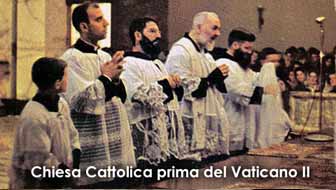
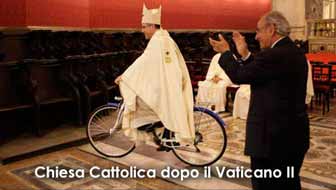
 “The Church is God’s house. It is forbidden for men to enter here with bare arms and wearing shorts. It is forbidden for women to enter wearing trousers, bare headed, with short, low-necked or sleeveless dresses.”
“The Church is God’s house. It is forbidden for men to enter here with bare arms and wearing shorts. It is forbidden for women to enter wearing trousers, bare headed, with short, low-necked or sleeveless dresses.”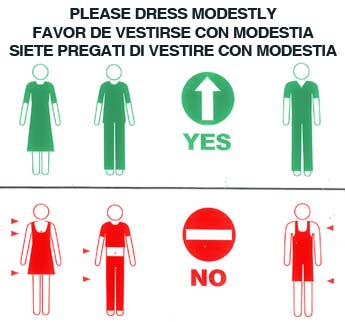
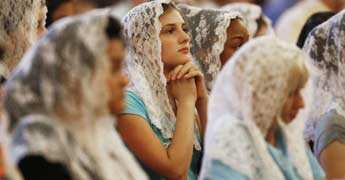
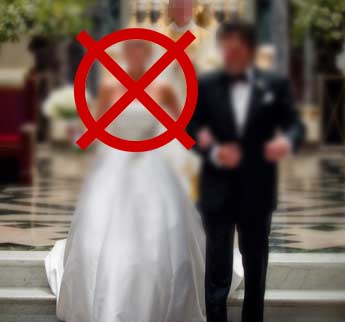
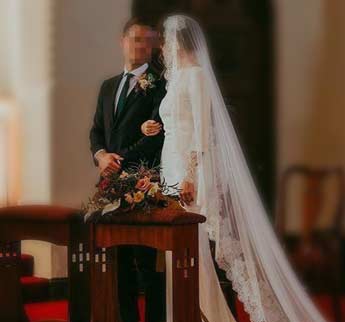
 “Parents, correct the ways if your family, have much dialogue with your children, make time to listen to them as many homes are being lost due to lack of love, dialogue, understanding and most specially for not inviting God. Take God back into your homes, pray my Holy Rosary, as the family that prays together stays together.”
“Parents, correct the ways if your family, have much dialogue with your children, make time to listen to them as many homes are being lost due to lack of love, dialogue, understanding and most specially for not inviting God. Take God back into your homes, pray my Holy Rosary, as the family that prays together stays together.” 



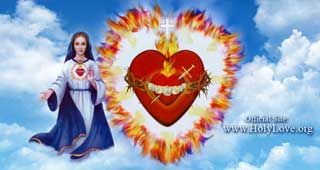
 January 31, 2022 "Heavenly Father, today, I surrender to You my heart. Help me to be Your instrument in the world. Cover me with the Precious Blood of Your Divine Son. Guard me against all evil. Protect me from any evil plan Satan may have for me today. Clothe me in Your Divine Will. Amen"
January 31, 2022 "Heavenly Father, today, I surrender to You my heart. Help me to be Your instrument in the world. Cover me with the Precious Blood of Your Divine Son. Guard me against all evil. Protect me from any evil plan Satan may have for me today. Clothe me in Your Divine Will. Amen" October 29, 2022 - "Most Holy Mother of God, Mary, Protectress of the Faith, shelter my faith in the refuge of your Immaculate Heart. Therein, protect my faith from any marauder. Expose to me the threats to my faith and help to overcome them. Amen"
October 29, 2022 - "Most Holy Mother of God, Mary, Protectress of the Faith, shelter my faith in the refuge of your Immaculate Heart. Therein, protect my faith from any marauder. Expose to me the threats to my faith and help to overcome them. Amen" "O Hearts of Jesus and Mary; I consecrate myself, I consecrate my family and the whole world, to your Most Beloved Hearts. Listen to the supplication which I making to you and accept our hearts in Yours, to be delivered and protected we, the whole world, from all evil and all sin. May the protection of your Two Hearts be refuge, strength, and protection, in the daily spiritual struggles. That the power of your Two Hearts irradiates the world so that it is protected from evil and sin. We willingly consecrate ourselves and consecrate all mankind to your Hearts; sure and confident, for your Great Mercy, to obtain the victory over the forces of evil in this world, and the eternal Glory in the Kingdom of God. Amen"
"O Hearts of Jesus and Mary; I consecrate myself, I consecrate my family and the whole world, to your Most Beloved Hearts. Listen to the supplication which I making to you and accept our hearts in Yours, to be delivered and protected we, the whole world, from all evil and all sin. May the protection of your Two Hearts be refuge, strength, and protection, in the daily spiritual struggles. That the power of your Two Hearts irradiates the world so that it is protected from evil and sin. We willingly consecrate ourselves and consecrate all mankind to your Hearts; sure and confident, for your Great Mercy, to obtain the victory over the forces of evil in this world, and the eternal Glory in the Kingdom of God. Amen" "O Virgin of Carmel, may the power of your Holy Scapular take away from me the enemy of my soul; bless me, Mother of Carmel, and deliver me from all evil and danger in this world. I ask you O Mother, that in the hour of my death, your Holy Scapular frees me from the fury of the devil and in the eternity, of the eternal fire. Amen"
"O Virgin of Carmel, may the power of your Holy Scapular take away from me the enemy of my soul; bless me, Mother of Carmel, and deliver me from all evil and danger in this world. I ask you O Mother, that in the hour of my death, your Holy Scapular frees me from the fury of the devil and in the eternity, of the eternal fire. Amen" 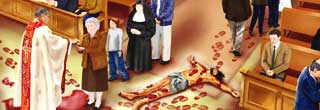
 "Oh Jesus of Divine Mercy, hear my pleadings to you, for I am here to do your Will"
"Oh Jesus of Divine Mercy, hear my pleadings to you, for I am here to do your Will" "O glorious St. Joseph! by your profound humility, by your unalterable meekness, by your invincible patience, by your angelic purity and perfect fidelity that made you a timely imitator of the virtues of Jesus and Mary, I ask you to console me in all my sorrows, to guide me in all my doubts, to defend me in all temptations, to deliver me from all spiritual and material dangers; to extend your arm against all my visible and invisible enemies, breaking and destroying all the snares and barriers that they tend and arm against me. Amen"
"O glorious St. Joseph! by your profound humility, by your unalterable meekness, by your invincible patience, by your angelic purity and perfect fidelity that made you a timely imitator of the virtues of Jesus and Mary, I ask you to console me in all my sorrows, to guide me in all my doubts, to defend me in all temptations, to deliver me from all spiritual and material dangers; to extend your arm against all my visible and invisible enemies, breaking and destroying all the snares and barriers that they tend and arm against me. Amen"  "Oh, blessed Saint Michael, protect us from the attacks and snares of the evil spirits because you know full well that we are poor mortals, fragile and weak, in need of the Mercy of God and of your protection to fulfill the mission that Heaven has commissioned to us. Oh, Saint Michael, may your victorious cry: “who is like God? no one is like God”, suppress and cast into Hell satan and all the evil spirits who prowl about the world seeking the destruction of souls. Amen"
"Oh, blessed Saint Michael, protect us from the attacks and snares of the evil spirits because you know full well that we are poor mortals, fragile and weak, in need of the Mercy of God and of your protection to fulfill the mission that Heaven has commissioned to us. Oh, Saint Michael, may your victorious cry: “who is like God? no one is like God”, suppress and cast into Hell satan and all the evil spirits who prowl about the world seeking the destruction of souls. Amen"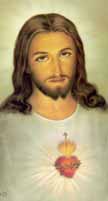 Most sweet Jesus, redeemer of the human race, look down upon us, humbly prostrate before your altar. We are yours and yours we wish to be; but to be more surely united with you, behold each one of us freely consecrates himself today to your most sacred heart. Many, indeed, have never known you, many too, despising your precepts, have rejected you. Have mercy on them all, most merciful Jesus, and draw them to your sacred heart. Be you king, O Lord, not only of the faithful who have never forsaken you, but also of the prodigal children who have abandoned you; grant that they may quickly return to their father’s house, lest they die of wretchedness and hunger. Be you king of those who are deceived by erroneous opinions, or whom discord keeps aloof, and call them back to the harbor of truth and unity of faith, so that soon there may be but one flock and one shepherd. Be you king also of all those who sit in the ancient superstition of the Gentiles, and refuse not you to deliver them out of darkness into the light and kingdom of God. Grant, O Lord, to your Church, assurance of freedom and immunity from harm; give peace and order to all nations, and make the earth resound from pole to pole with one cry: Praise to the divine heart that wrought our salvation; to it be glory and honor forever. Amen.
Most sweet Jesus, redeemer of the human race, look down upon us, humbly prostrate before your altar. We are yours and yours we wish to be; but to be more surely united with you, behold each one of us freely consecrates himself today to your most sacred heart. Many, indeed, have never known you, many too, despising your precepts, have rejected you. Have mercy on them all, most merciful Jesus, and draw them to your sacred heart. Be you king, O Lord, not only of the faithful who have never forsaken you, but also of the prodigal children who have abandoned you; grant that they may quickly return to their father’s house, lest they die of wretchedness and hunger. Be you king of those who are deceived by erroneous opinions, or whom discord keeps aloof, and call them back to the harbor of truth and unity of faith, so that soon there may be but one flock and one shepherd. Be you king also of all those who sit in the ancient superstition of the Gentiles, and refuse not you to deliver them out of darkness into the light and kingdom of God. Grant, O Lord, to your Church, assurance of freedom and immunity from harm; give peace and order to all nations, and make the earth resound from pole to pole with one cry: Praise to the divine heart that wrought our salvation; to it be glory and honor forever. Amen.